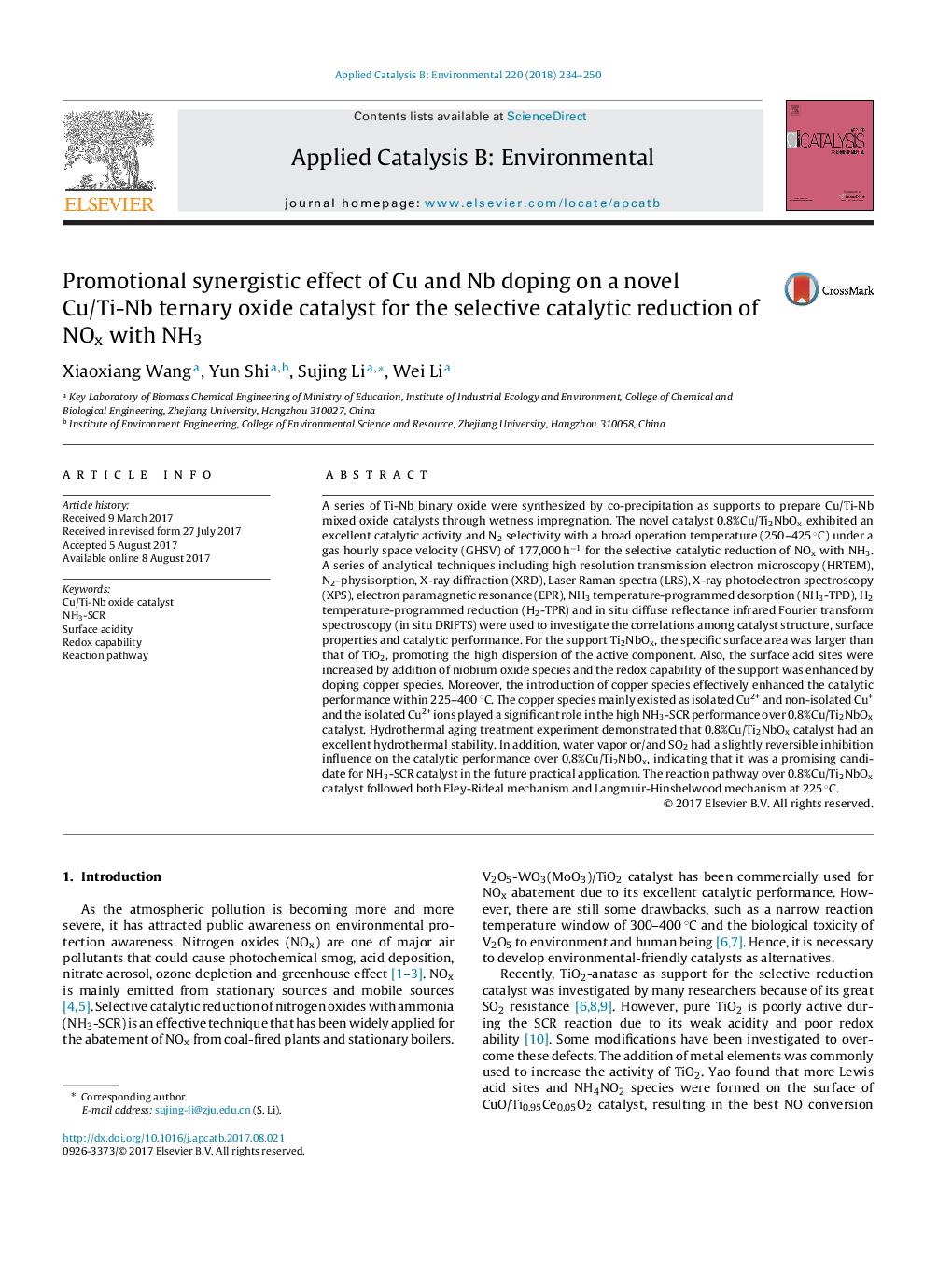| Article ID | Journal | Published Year | Pages | File Type |
|---|---|---|---|---|
| 6453587 | Applied Catalysis B: Environmental | 2018 | 17 Pages |
â¢Cu/Ti-Nb oxide catalyst showed an excellent SCR activity and N2 selectivity within 250-425 °C at GHSV of 177,000 hâ1.â¢Doping of Nb increased the specific surface area, the amount of acid sites and surface oxygen of TiO2.â¢Copper species could effectively enhance the catalytic performance of Ti2NbOx at 225-400 °C.â¢Both Eley-Rideal (E-R) mechanism and Langmuir-Hinshelwood (H-L) mechanism occurred over 0.8%Cu/Ti2NOx catalyst at 225 °C.
A series of Ti-Nb binary oxide were synthesized by co-precipitation as supports to prepare Cu/Ti-Nb mixed oxide catalysts through wetness impregnation. The novel catalyst 0.8%Cu/Ti2NbOx exhibited an excellent catalytic activity and N2 selectivity with a broad operation temperature (250-425 °C) under a gas hourly space velocity (GHSV) of 177,000 hâ1 for the selective catalytic reduction of NOx with NH3. A series of analytical techniques including high resolution transmission electron microscopy (HRTEM), N2-physisorption, X-ray diffraction (XRD), Laser Raman spectra (LRS), X-ray photoelectron spectroscopy (XPS), electron paramagnetic resonance (EPR), NH3 temperature-programmed desorption (NH3-TPD), H2 temperature-programmed reduction (H2-TPR) and in situ diffuse reflectance infrared Fourier transform spectroscopy (in situ DRIFTS) were used to investigate the correlations among catalyst structure, surface properties and catalytic performance. For the support Ti2NbOx, the specific surface area was larger than that of TiO2, promoting the high dispersion of the active component. Also, the surface acid sites were increased by addition of niobium oxide species and the redox capability of the support was enhanced by doping copper species. Moreover, the introduction of copper species effectively enhanced the catalytic performance within 225-400 °C. The copper species mainly existed as isolated Cu2+ and non-isolated Cu+ and the isolated Cu2+ ions played a significant role in the high NH3-SCR performance over 0.8%Cu/Ti2NbOx catalyst. Hydrothermal aging treatment experiment demonstrated that 0.8%Cu/Ti2NbOx catalyst had an excellent hydrothermal stability. In addition, water vapor or/and SO2 had a slightly reversible inhibition influence on the catalytic performance over 0.8%Cu/Ti2NbOx, indicating that it was a promising candidate for NH3-SCR catalyst in the future practical application. The reaction pathway over 0.8%Cu/Ti2NbOx catalyst followed both Eley-Rideal mechanism and Langmuir-Hinshelwood mechanism at 225 °C.
Graphical abstractDownload high-res image (178KB)Download full-size image
